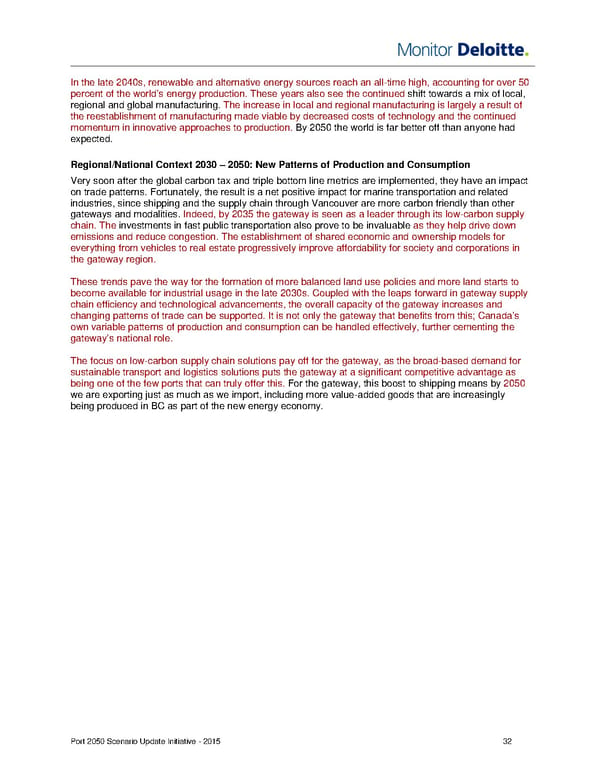In the late 2040s, renewable and alternative energy sources reach an all-time high, accounting for over 50 percent of the world’s energy production. These years also see the continued shift towards a mix of local, regional and global manufacturing. The increase in local and regional manufacturing is largely a result of the reestablishment of manufacturing made viable by decreased costs of technology and the continued momentum in innovative approaches to production. By 2050 the world is far better off than anyone had expected. Regional/National Context 2030 – 2050: New Patterns of Production and Consumption Very soon after the global carbon tax and triple bottom line metrics are implemented, they have an impact on trade patterns. Fortunately, the result is a net positive impact for marine transportation and related industries, since shipping and the supply chain through Vancouver are more carbon friendly than other gateways and modalities. Indeed, by 2035 the gateway is seen as a leader through its low-carbon supply chain. The investments in fast public transportation also prove to be invaluable as they help drive down emissions and reduce congestion. The establishment of shared economic and ownership models for everything from vehicles to real estate progressively improve affordability for society and corporations in the gateway region. These trends pave the way for the formation of more balanced land use policies and more land starts to become available for industrial usage in the late 2030s. Coupled with the leaps forward in gateway supply chain efficiency and technological advancements, the overall capacity of the gateway increases and changing patterns of trade can be supported. It is not only the gateway that benefits from this; Canada’s own variable patterns of production and consumption can be handled effectively, further cementing the gateway’s national role. The focus on low-carbon supply chain solutions pay off for the gateway, as the broad-based demand for sustainable transport and logistics solutions puts the gateway at a significant competitive advantage as being one of the few ports that can truly offer this. For the gateway, this boost to shipping means by 2050 we are exporting just as much as we import, including more value-added goods that are increasingly being produced in BC as part of the new energy economy. Port 2050 Scenario Update Initiative - 2015 32
 Monitor Deloitte - Final Report Page 33 Page 35
Monitor Deloitte - Final Report Page 33 Page 35